By Lt. Col. Harold E. Raugh, Jr., Ph.D., U.S. Army (Ret.)
The German U-boat U-505 was, according to author James E. Wise, Jr., “probably one of the unluckiest U-boats in Adolf Hitler’s submarine service during World War II.” After being involved in a series of unfortunate incidents, coupled with poor leadership and “mysterious equipment malfunctions,” in June 1944, U-505 became the first enemy combatant ship to be captured by the U.S. Navy in battle on the high seas since the War of 1812.
The final resting place of U-505 was not the bottom of the sea. It was, quite unexpectedly—and still is—on permanent display at the Museum of Science and Industry in Chicago. The unparalleled odyssey of the U-505 is chronicled by Wise with a crisp and detailed narrative supported by scores of fascinating photographs in U-505: The Final Journey (Naval Institute Press, Annapolis, MD, 2005, 204 pp., maps, illustrations, appendices, works consulted, $32.95, hardcover).
The 750-ton, 252-foot U-505 was launched from Hamburg, Germany, in May 1941. Larger than earlier submarines, U-505 could carry extra fuel, giving it a surface cruising range of 13,450 miles. This gave U-505 the opportunity to operate thousands of miles from its base as a “lone wolf,” and not in a wolfpack with other U-boats.
U-505 sailed initially to the German submarine base at Lorient on the French coast. Its second war patrol, during which it sank 25,000 tons of shipping in 86 days at sea, was conducted mainly off West Africa. A third war patrol in the Caribbean followed, as did a new captain, as the submarine war began to favor the Allies. Aborted missions and bad luck then seemed to follow the U-505, and the second captain shockingly committed suicide in the control room.
U-505’s last patrol was also off the coast of West Africa. U.S. Navy Task Group 22.3, consisting of the escort carrier Guadalcanal (CVE-60), four destroyers, and an air group commanded by Captain Daniel V. Gallery, sailed for Casablanca to refuel in early June 1944. On the way, aircraft reported radar contacts with U-505. U.S. depth charges caught the U-boat completely by surprise and forced it to the surface. Boarding party members quickly closed U-505’s open valves and saved the boat from being scuttled. Among the prizes captured were two Enigma machines and codebooks.
U-505 was towed to Bermuda, renamed the USS Nemo, and guarded for the rest of the war. When the war ended, the boat visited ports to help sell war bonds.
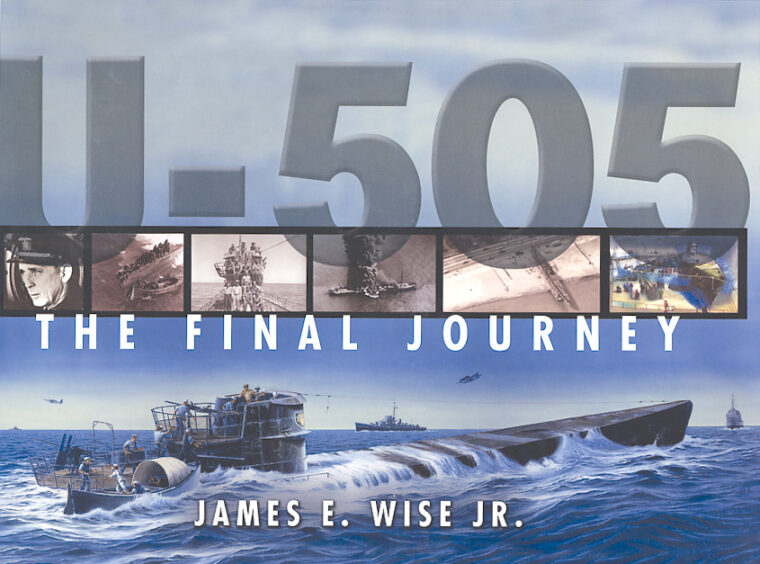
Gallery’s brother recommended that U-505 be brought to Chicago, Gallery’s hometown, and made into a “memorial to the thousands of seamen who had lost their lives in the two great Battles of the Atlantic.” The Museum of Science and Industry, after active campaigning, received title to the former German submarine in 1954. U-505 was towed from Portsmouth, N.H. through the Great Lakes, and to its place on reinforced concrete cradles near the museum.
In 2001, a study revealed that almost a half-century of exposure to the elements and over 24 million visitors had taken their toll on U-505’s condition. Accordingly, a new underground, self-enclosed exhibition hall was constructed, and U-505 was renovated and moved to its new permanent location in 2004.
This outstanding book, which also describes submarine warfare and World War II strategy in general, helps one experience the living legacy of U-505 today.
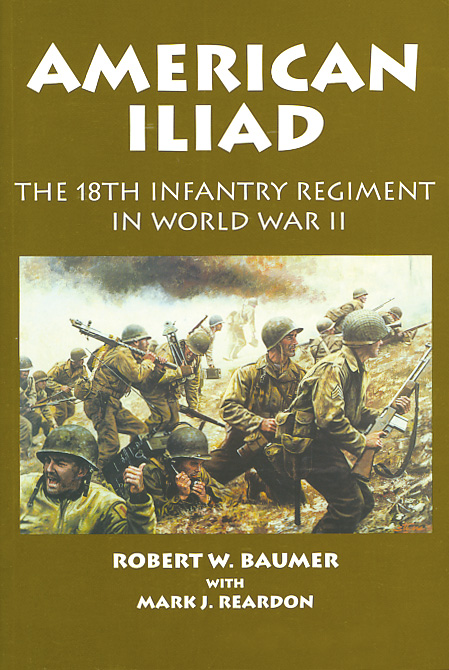 Recent and Recommended
Recent and Recommended
American Iliad: The 18th Infantry Regiment in World War II, by Robert W. Baumer with Mark J. Reardon, Aberjona Press, Bedford, PA, 2004, 415 pp., illustrations, maps, appendices, notes, index, $24.95, softcover.
The 18th Infantry Regiment was one of three regiments of the lauded 1st Infantry Division, “The Big Red One,” during World War II. Beginning with the regiment’s organization day on May 3, 1941, to VE day, May 8, 1945, this outstanding volume chronicles the unit’s wartime operations and activities. The 18th Infantry entered combat during Operation Torch, the invasion of North Africa, in November 1942. The regiment’s infantrymen gained proficiency and confidence as they fought across North Africa and in the invasion of Sicily. On D-day, June 6, 1944, the 18th Infantry stormed the Normandy beachhead to reinforce the initial assault force. After piercing the Norman hedgerows, the regiment advanced through the meat grinder of the Hürtgen Forest, fought in the Battle of the Bulge, pushed through the Siegfried Line, and was in Czechoslovakia at war’s end.
This impeccably researched and finely crafted study—interspersed with participant accounts and supplemented by excellent maps and illustrations—is a model unit history. It is a fitting tribute to the courageous and tenacious soldiers who served in the 18th Infantry Regiment during World War II and merits the largest audience.
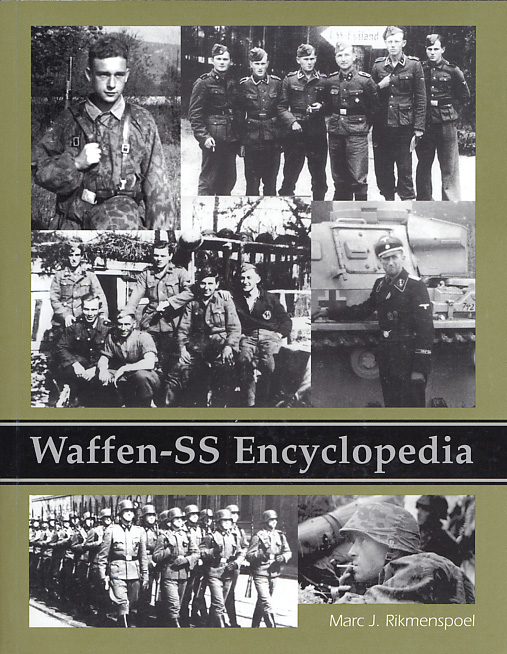 In Brief
In Brief
Waffen-SS Encyclopedia, by Marc J. Rikmenspoel, Aberjona Press, Bedford, PA, 2004, 285 pp., illustrations, appendix, annotated bibliography, $19.95, softcover.
The German SS (Schutzstaffel, or Protection Force) is one of the most notorious yet least understood of World War II German military organizations. It had three sections, the last of which, the Waffen-SS (Armed SS), was formed in 1940 after the campaign in France. The Waffen-SS was the true military component of the larger SS, and it is the main focus of this superb study. While not a traditional encyclopedia, this book is divided into eight parts. The first two cover in unparalleled detail the formations (units) and their evolution, and the structure of its divisions. The following three fascinating chapters describe Germans, Germanics (ethnic Germans from outside Germany), and non-German and non-Germanics in the Waffen-SS. Chapter 6 includes biographical sketches of 13 leading Waffen-SS personalities, including Paul Hausser, Felix Steiner, and Sepp Dietrich. These are enhanced with excellent photographs. Chapter 7 describes Waffen-SS weapons. The volume concludes with “Misconceptions and Controversies About the Waffen-SS.” This thoroughly researched and well-written study is an indispensable reference book for anyone interested in World War II.
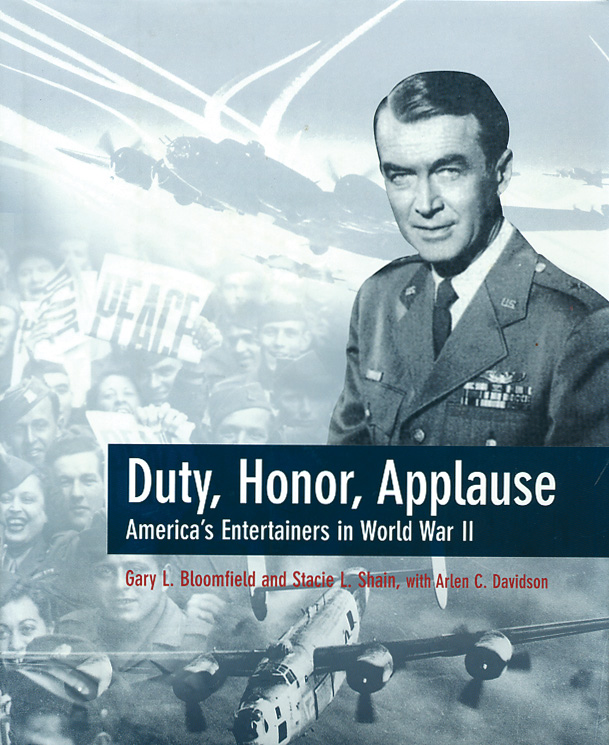 Duty, Honor, Applause: America’s Entertainers in World War II, by Gary L. Bloomfield, Stacie L. Shain, and Arlen C. Davidson, Lyons Press, Guilford, CT, 2004, 497 pp., illustrations, bibliography, $29.95, hardcover.
Duty, Honor, Applause: America’s Entertainers in World War II, by Gary L. Bloomfield, Stacie L. Shain, and Arlen C. Davidson, Lyons Press, Guilford, CT, 2004, 497 pp., illustrations, bibliography, $29.95, hardcover.
America entered World War II during the golden age of Hollywood. The motion picture studios, actors and actresses, musicians and comedians, and directors and filmmakers all mobilized to support the war effort. Leading actors such as Jimmy Stewart, Douglas Fairbanks, Jr., Clark Gable, and a host of lesser luminaries served on active duty, some in combat. Bob Hope, the Andrews Sisters, Jack Benny, and the Three Stooges traveled to many military installations, frequently overseas, to entertain soldiers and help bolster military morale. Documentary war films were made by John Ford, John Huston, Frank Capra, and other renowned directors. Other stars helped sell war bonds, visited wounded soldiers in hospitals, and hosted servicemen at the USO, while starlets and models lent their svelte figures to wildly popular “pin-ups.” This fascinating book, almost encyclopedic in scope and profusely illustrated (which would have benefited from the inclusion of an index), contains much more than this brief review can highlight. This superb volume hearkens back to a bygone era of patriotism, sacrifice, and national unity.
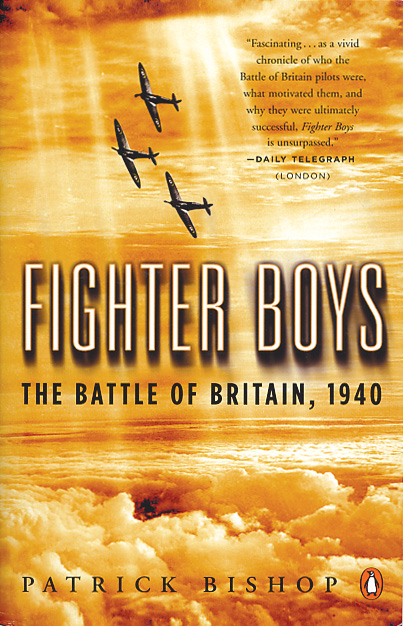 Fighter Boys: The Battle of Britain, 1940, by Patrick Bishop, Penguin Books, New York, 2004, 448 pp., illustrations, map, notes, references, index, $16.00, softcover.
Fighter Boys: The Battle of Britain, 1940, by Patrick Bishop, Penguin Books, New York, 2004, 448 pp., illustrations, map, notes, references, index, $16.00, softcover.
For a few short months in 1940, after the fall of France in June, all that stood between Great Britain and a possible German invasion was the English Channel and a few thousand stalwart Royal Air Force (RAF) pilots. These outnumbered “Fighter Boys,” sweeping out of the skies in their sleek Hawker Hurricanes and Supermarine Spitfires, turned back the overwhelming German aerial onslaught from August to November 1940. During the Battle of Britain, as this campaign was called, 1,733 German planes were shot down against the loss of 915 British planes. The cost was quite high. Of the 2,917 RAF pilots who fought in these 1940 battles, 540 were killed, and another 795 died before the end of the war. Journalist Patrick Bishop has skillfully interwoven wartime letters and diaries, later interviews, and other documents to produce an enthralling account of the “Fighter Boys” at war, their trials, tribulations, heroism, and sacrifices. This riveting book—about these brave pilots whom Prime Minister Winston Churchill lauded with the words, “ Never, in the field of human conflict, was so much owed by so many to so few — is a real page-turner.
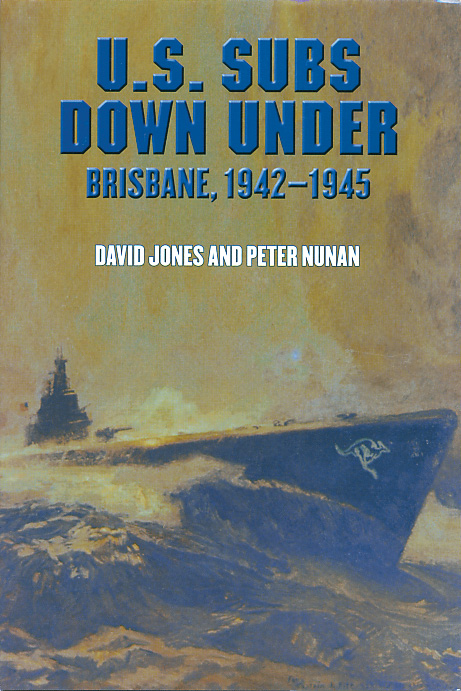 U.S. Subs Down Under: Brisbane, 1942-1945, by David Jones and Peter Nunan, Naval Institute Press, Annapolis, MD, 2005, 320 pp., maps, illustrations, appendices, notes, bibliography, index, $34.95, hardcover.
U.S. Subs Down Under: Brisbane, 1942-1945, by David Jones and Peter Nunan, Naval Institute Press, Annapolis, MD, 2005, 320 pp., maps, illustrations, appendices, notes, bibliography, index, $34.95, hardcover.
On February 15, 1942, the Japanese captured Singapore, and four days later Japanese planes conducted a devastating raid on Darwin, Australia. Two months later, to buttress the defense of Australia, six U.S. Navy submarines arrived in Brisbane, a port on the country’s east coast. From that time until April 1945, when the U.S. submarine base and repair unit was moved to the Philippines, almost 200 submarine war patrols departed from Brisbane. These combat patrols destroyed 117 enemy ships (including three heavy and two light cruisers) totaling 515,000 tons sunk and damaged many others. This represented about one-tenth of Japanese shipping sunk by American submarines during the entire war. Other submarine missions included providing support for coastwatchers and clandestine forces, search and rescue, and reconnaissance operations. These important submarine missions, the relatively unknown port and repair activities, and the interrelationships between U.S. sailors and Australian civilians at Brisbane are chronicled in rich detail in this interesting study.
 A German POW in New Mexico, by Walter Schmid, University of New Mexico Press with the Historical Society of New Mexico, Albuquerque, 2005, 167 pp., illustrations, appendix, bibliography, $24.95, hardcover.
A German POW in New Mexico, by Walter Schmid, University of New Mexico Press with the Historical Society of New Mexico, Albuquerque, 2005, 167 pp., illustrations, appendix, bibliography, $24.95, hardcover.
Walter Schmid was one of the lucky ones, as far as German prisoners of war go. A soldier in the Afrika Korps, he was one of a quarter million German and Italian soldiers who surrendered to the Allies in North Africa in May 1943. Schmid, one of about 380,000 German soldier interned in the United States during the war, was held initially at Camp Gruber, then Camp McAlester, both in Oklahoma. In mid-1944, he was transferred to another camp near Las Cruces, N.M. At the latter, Schmid worked mainly as a field laborer in a little-known wartime program of contract labor, in which local farmers could hire POW labor if there was a manpower shortage in the area. Believing in Aryan superiority, Schmid noted the American contradiction of treating Mexicans and blacks as second-class citizens. Schmid’s nicely written memoir, based on his POW diary, vividly portrays his “battleground experience, captivity, long separation from family and home, loneliness, isolation, and the uncertainty of the future.” After returning to Germany in 1947 and seeing Germans returning from Russian POW camps, Schmid finally realized how fortunate he had been.
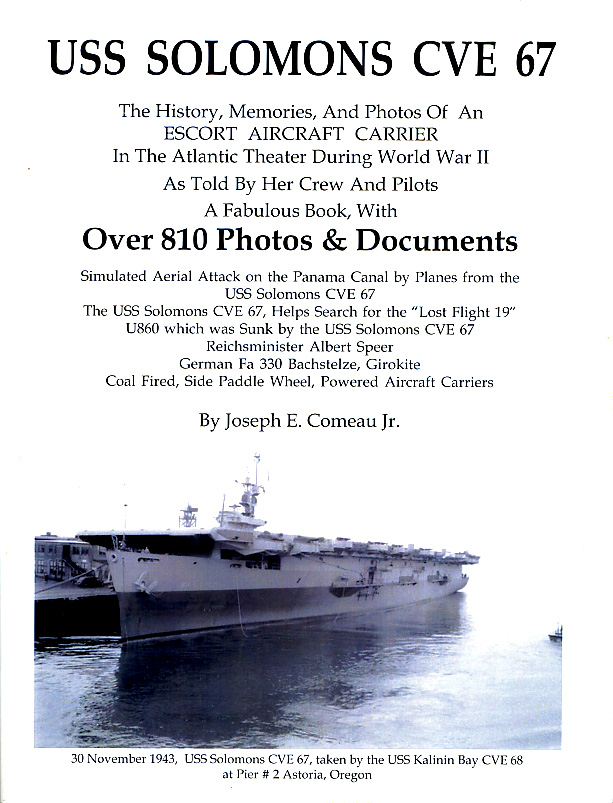 U.S.S. Solomons, CVE-67: The History, Memories, and Photos of an Escort Aircraft Carrier in the Atlantic Theater during World War II as Told by Her Crew and Pilots, by Joseph E. Comeau, Jr., Trafford Publishing, Victoria, BC, Canada, 2004, 547 pp., illustrations, map, source notes, $36.95 large format softcover.
U.S.S. Solomons, CVE-67: The History, Memories, and Photos of an Escort Aircraft Carrier in the Atlantic Theater during World War II as Told by Her Crew and Pilots, by Joseph E. Comeau, Jr., Trafford Publishing, Victoria, BC, Canada, 2004, 547 pp., illustrations, map, source notes, $36.95 large format softcover.
The USS Solomons (CVE-67), an escort aircraft carrier, was converted from a maritime commission hull and launched on October 6, 1943. It served mainly in the Atlantic Theater, and while it saw little combat, it still made a significant contribution to the American war effort. The Solomons frequently ferried planes and troops from one distant location to another. During an early voyage, the ship participated in a simulated aerial attack on the Panama Canal. In June 1944, planes from Solomons detected a German U-boat and eventually sank it. This was Solomons’ sole U-boat engagement of the war. In 1946, Solomons was decommissioned and sold for scrap, but its spirit lived on in the sailors who had served on her. This interesting book was put together by Joseph S. Comeau, Jr., in honor of his father who was a Solomons’ sailor. It contains numerous accounts and biographical sketches of the ship’s officers and men, copies of photographs, scrapbook items, and other ephemera, such as the ship’s memos. This quaint book, almost like a family photo album and scrapbook, was clearly a labor of love.
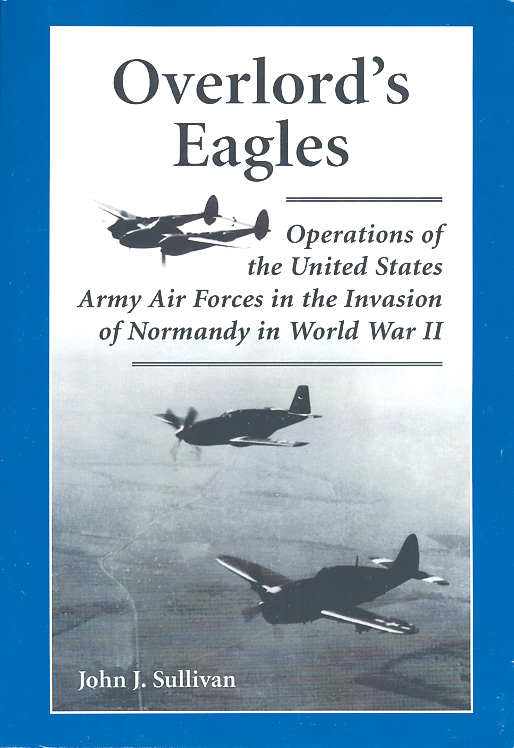 Overlord’s Eagles: Operations of the United States Army Air Forces in the Invasion of Normandy in World War II, by John J. Sullivan, McFarland, Jefferson, NC, 2005, 223 pp., illustrations, maps, glossary, notes, bibliography, index, $29.95, softcover.
Overlord’s Eagles: Operations of the United States Army Air Forces in the Invasion of Normandy in World War II, by John J. Sullivan, McFarland, Jefferson, NC, 2005, 223 pp., illustrations, maps, glossary, notes, bibliography, index, $29.95, softcover.
Allied air superiority was a prerequisite for the success of the amphibious landings at Normandy on D-day 1944. Author John J. Sullivan’s well-researched and finely written study traces the air preparations and support of the Normandy landings and includes contemporary and current evaluations of their effectiveness. More significantly, Sullivan, by using numerous official documents and personal papers, chronicles the philosophies of the senior generals and the strategic debate surrounding these operations. Prior to D-day, air assets focused on bombing French and Belgian rail centers to disrupt German strategic mobility and their ability to reinforce Normandy. Other generals believed it was more important to destroy the Luftwaffe and implemented plans to accomplish this goal. On D-day, tactical air forces provided effective close air support to the Allied ground troops. This excellent book makes a meaningful contribution to the study of air support to the Normandy landings and other military operations in northwest Europe.
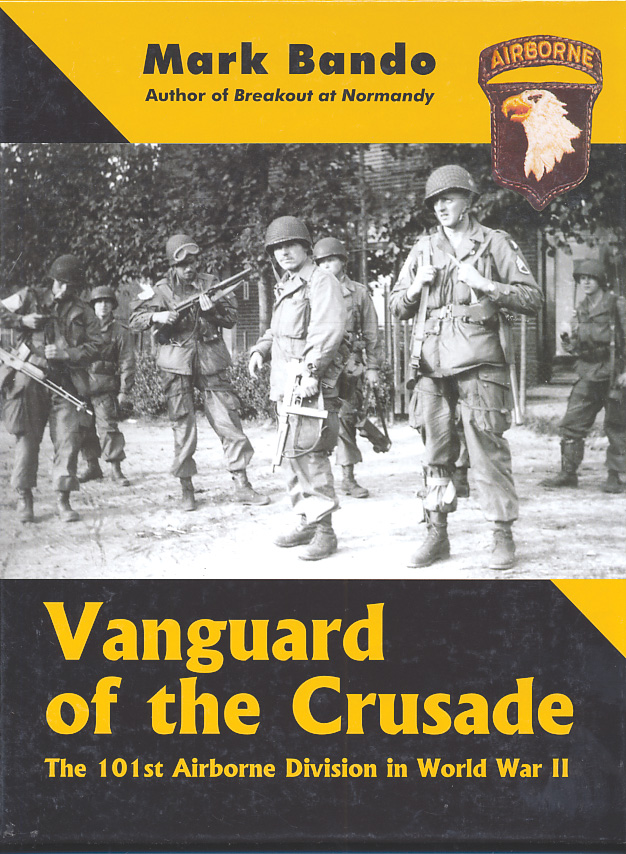 Vanguard of the Crusade: The 101st Airborne Division in World War II, by Mark Bando, Aberjona Press, Bedford, PA, 2003, 311 pp., illustrations, maps, appendices, index, $29.95, large format hardcover.
Vanguard of the Crusade: The 101st Airborne Division in World War II, by Mark Bando, Aberjona Press, Bedford, PA, 2003, 311 pp., illustrations, maps, appendices, index, $29.95, large format hardcover.
Mark Bando is a recognized authority on the operations of the 101st Airborne Division, the “Screaming Eagles,” during the great crusade of liberating Europe from tyranny in World War II. He has conducted over 950 interviews with division combat veterans since 1968 and has collected thousands of rare unit wartime photographs. The results of his research were published in two earlier volumes that have been combined, expanded, and published as Vanguard of the Crusade. This enthralling saga is the story of the officers and men of the Screaming Eagles, told largely by the paratroopers themselves, in poignant and riveting detail. While the night combat jump into Normandy on D-day, fighting through the Norman hedgerows, Operation Market Garden, and the vicious winter battle at Bastogue are well known, this book brings to life the many equally fierce but smaller engagements and the sky soldiers who fought them. This compelling study, accented by hundreds of mesmerizing photographs, showcases the wartime accomplishments of the Screaming Eagles and the human element of combat.
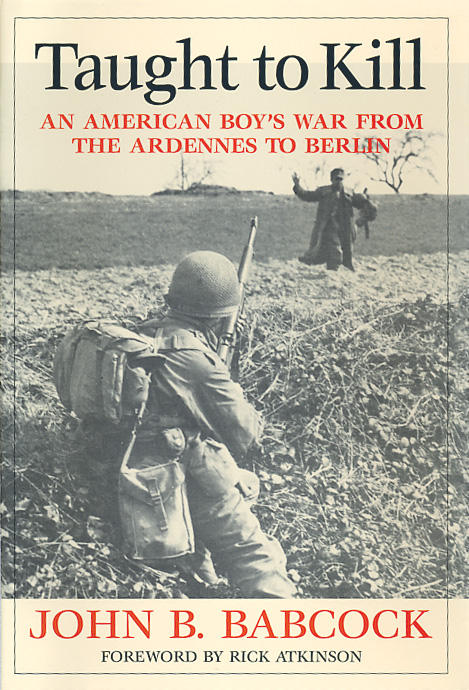 Taught to Kill: An American Boy’s War from the Ardennes to Berlin, by John B. Babcock, Potomac Books, Washington, D.C., 2005, 249 pp., illustrations, $27.95, hardcover.
Taught to Kill: An American Boy’s War from the Ardennes to Berlin, by John B. Babcock, Potomac Books, Washington, D.C., 2005, 249 pp., illustrations, $27.95, hardcover.
Admitting that his account is “a small chip of a broad mosaic,” World War II infantryman John B. Babcock has written a poignant, candid, and gut-wrenching memoir of his combat service in Europe during the final months of the war. Born in 1922, Babcock was serving in the Army Specialized Training Program (ASTP) when, as the pool of ground soldiers was shrinking and the program was ended in 1944, he became an infantry mortarman. Babcock and his unit, the 78th Infantry Division, entered combat in the Hürtgen Forest three days before the German counteroffensive of the Battle of the Bulge. Through the frigid, fierce fighting in the Ardennes, being wounded at Remagen, surviving the war, and serving on occupation duty in Berlin, Babcock records in compelling and frequently gruesome detail his actions and thoughts. Fear, confusion, violence, and death dominated a battlefield abandoned by logic, fairness, and sympathy. This is a compelling account, revealing that Babcock’s soul was scarred much deeper than his body. It is a fitting corrective to the notions of unending selflessness and heroism in combat and the idea of World War II veterans being “the greatest generation.”
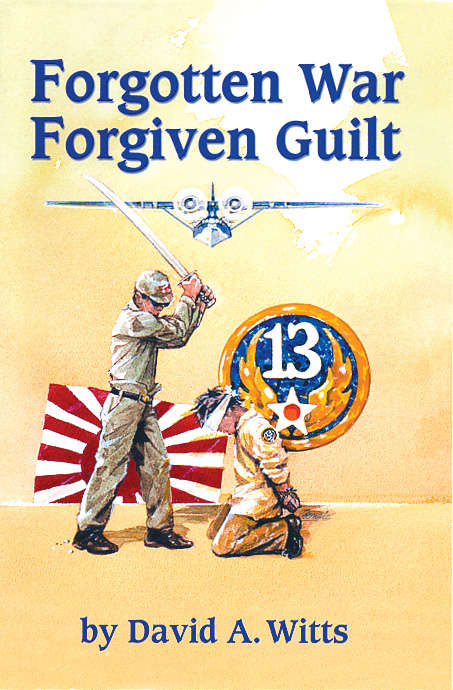 Forgotten War, Forgiven Guilt, by David A. Witts, Yucca Tree Press, Las Cruces, NM, 2003, 262 pp., maps, illustrations, references, bibliography, $19.95, hardcover.
Forgotten War, Forgiven Guilt, by David A. Witts, Yucca Tree Press, Las Cruces, NM, 2003, 262 pp., maps, illustrations, references, bibliography, $19.95, hardcover.
Author David A. Witts flew the amphibious Consolidated PBY5A Catalina aircraft in the Pacific Theater during World War II. This provocative book, based upon his wartime experiences, limited research, and seemingly festering sense of resentment, consists of a number of vignettes. They are organized into chapters that focus on four main themes. The first is that the “accomplishments [of the 13th Air Force) have gone unrecognized and unrecorded due primarily to ‘turf’ issues.” Elsewhere, Witts states the 13th Air Force’s “official story” was written years later, and adequate research would have revealed numerous volumes on the topic. Witt also states that the operations in the European Theater have overshadowed those in the Pacific. With some accuracy, the author observes, “Japanese atrocities were more bestial, of longer duration, and more widespread than those in Germany.” Witts remains convinced that, unlike the Holocaust in Europe, Japanese war crimes were “forgotten and forgiven.” While some of the information in this book is worthwhile and eye opening, the reader may not want to wade through the author’s opinionated and sarcastic comments, especially his uninformed and jingoistic 9/11 jeremiad, to find it.
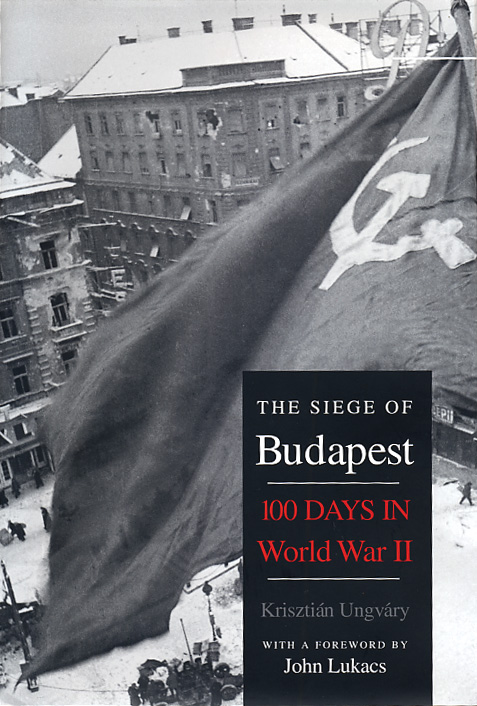 The Siege of Budapest: 100 Days in World War II, by Krisztian Ungvary, Yale University Press, New Haven, CT, 2005, 496 pp., illustrations, maps, notes, tables, bibliography, index, $35.00, hardcover.
The Siege of Budapest: 100 Days in World War II, by Krisztian Ungvary, Yale University Press, New Haven, CT, 2005, 496 pp., illustrations, maps, notes, tables, bibliography, index, $35.00, hardcover.
The Soviet steamroller ravaged much of Eastern Europe in early 1945 on its relentless drive to capture the Nazi capital of Berlin. The opposing forces marched and fought at Budapest, Hungary, as Soviet Premier Josef Stalin thought this was the key to dominating Europe and Hitler wanted to maintain his grip on Vienna and block the southern approach to Berlin. The siege and vicious battle of Budapest lasted about 100 days, and it was one of the bloodiest of the entire war. Hungarian historian Krisztian Ungvary has used documents from previously inaccessible Eastern European archives and hundreds of participants’ account to write a meticulously detailed, almost block-by-block, chronicle and assessment of the battle of Budapest. More than 80,000 Soviet soldiers and about 38,000 German and Hungarian soldiers were killed, as were many Hungarian civilians. This compelling story about the battle of Budapest, considered the “second Stalingrad” by the Germans, makes an important contribution to World War II literature.
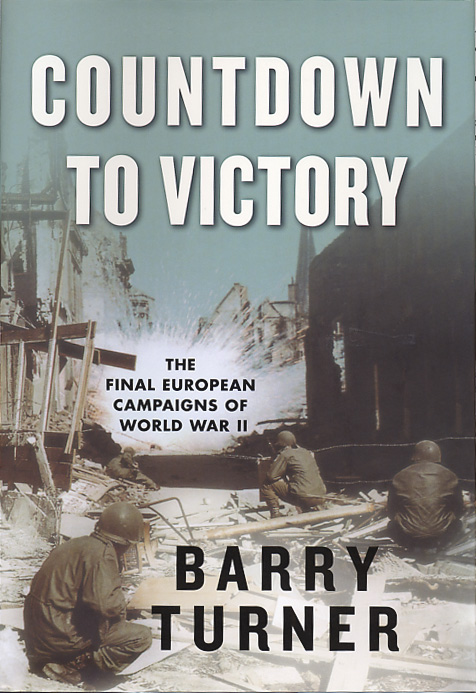 Countdown to Victory: The Final European Campaigns of World War II, by Barry Turner, William Morrow, New York, 2004, 494 pp., chronology, illustrations, maps, appendix, notes, index, $27.95, hardcover.
Countdown to Victory: The Final European Campaigns of World War II, by Barry Turner, William Morrow, New York, 2004, 494 pp., chronology, illustrations, maps, appendix, notes, index, $27.95, hardcover.
The last months of World War II in Europe, writes Barry Turner, were much more than “a short epilogue” to a conflict assumed to be over with Allied victory inevitable. After the Allies were surprised by the determined German counterattack in the Ardennes in December 1944, which began the month-long Battle of the Bulge, the Allies had to fight their way foot by foot to the German heartland. The majority of this book is a chronicle of demanding land operations on the European continent, penetrating the Siegfried Line, advancing to the Rhine, and finally linking up with the Soviet forces at Torgau on the Elbe River. Other chapters highlight various facets of the war, including the Allied bombing campaign, Danish and Norwegian resistance, the famine in the Netherlands during the severe winter of 1944-1945, competing strategic concepts, and the death throes of the German Army and the Third Reich. As seems to be the vogue in many history books today, this narrative contains various anecdotal materials and is aimed at a popular readership.
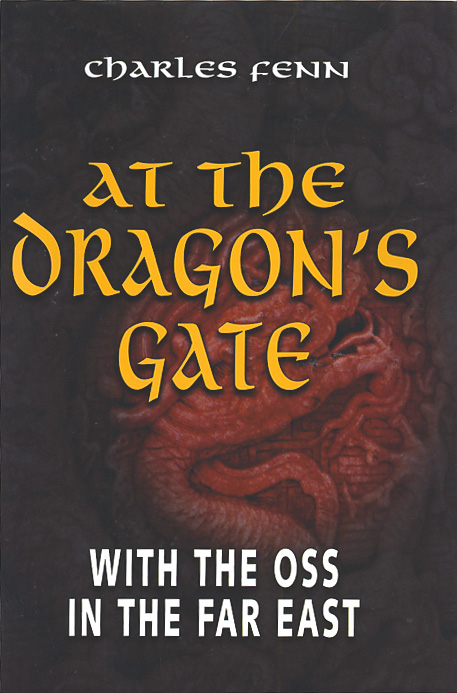 At the Dragon’s Gate: With the OSS in the Far East, by Charles Fenn, Naval Institute Press, Annapolis, MD, 2004, 226 pp., illustrations, $32.95, hardcover.
At the Dragon’s Gate: With the OSS in the Far East, by Charles Fenn, Naval Institute Press, Annapolis, MD, 2004, 226 pp., illustrations, $32.95, hardcover.
Charles Fenn’s World War II experiences read like a fast-paced adventure novel. After serving as a journalist in Asia, 36-year-old Fenn was recruited by the Office of Strategic Service (OSS), the precursor of the Central Intelligence Agency. Based on his earlier experiences, Fenn was commissioned as a Marine 1st lieutenant after undergoing Marine training. Of the five sections in the OSS, Fenn was assigned to MO or Morale Operations, which was responsible for propaganda and deception activities. He was assigned to the China-Burma-India (CBI) Theater. Initially, he worked with Detachment 101 in Burma and then established a circuit of spies and informants in Southern China. Fenn was later posted to its Air Ground Aid Services in Indochina, where one of his accomplishments was recruiting Ho Chi Minh as an Allied agent. “Fearless” Fenn’s interesting activities and candid comments on ill-chosen OSS leadership, Chinese nationalist leader Chiang Kai-Shek, and famed leader of the Flying Tigers fighter group General Claire Chennault are especially provocative. Fenn’s book is a fascinating wartime intelligence memoir.
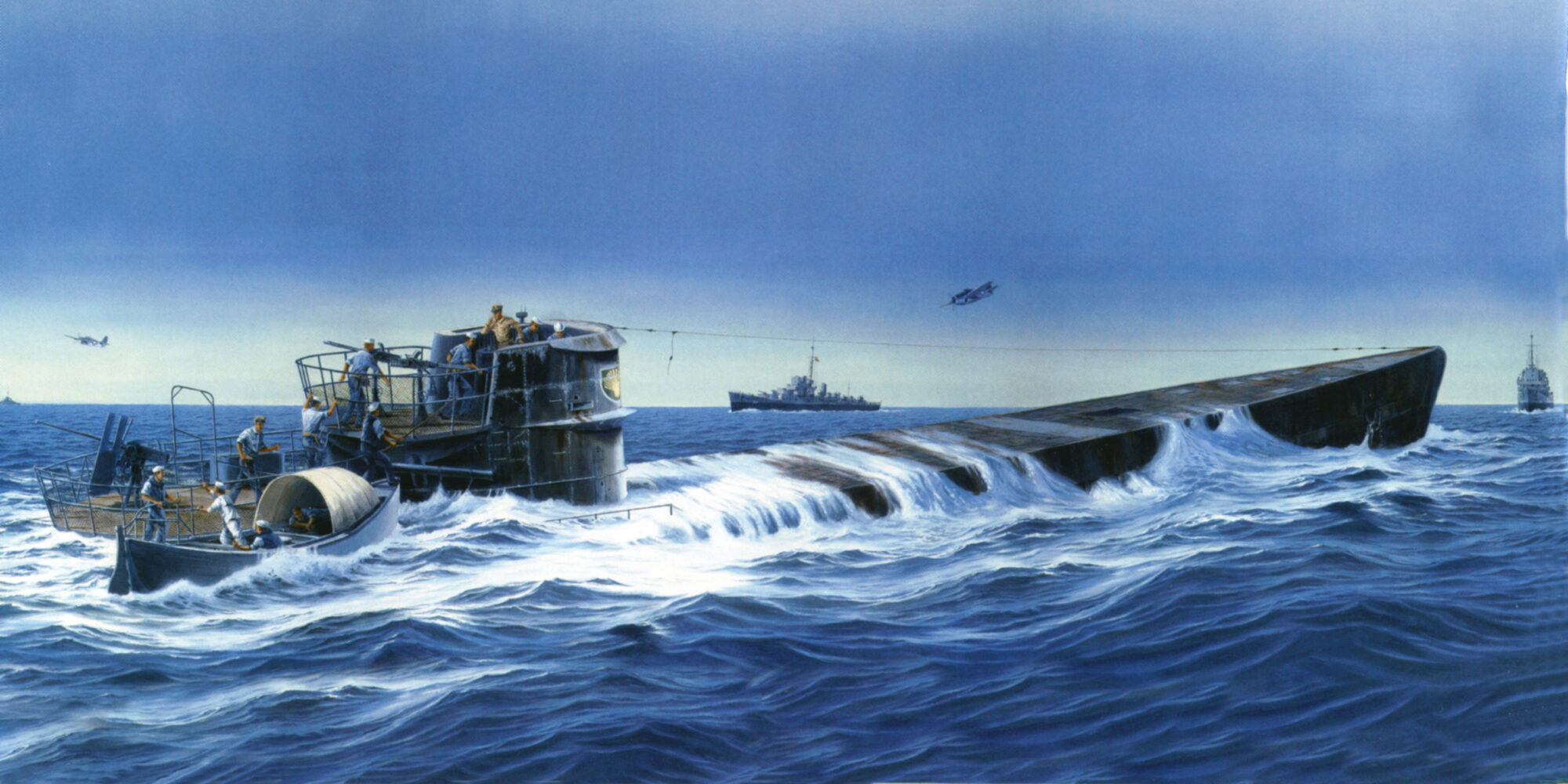
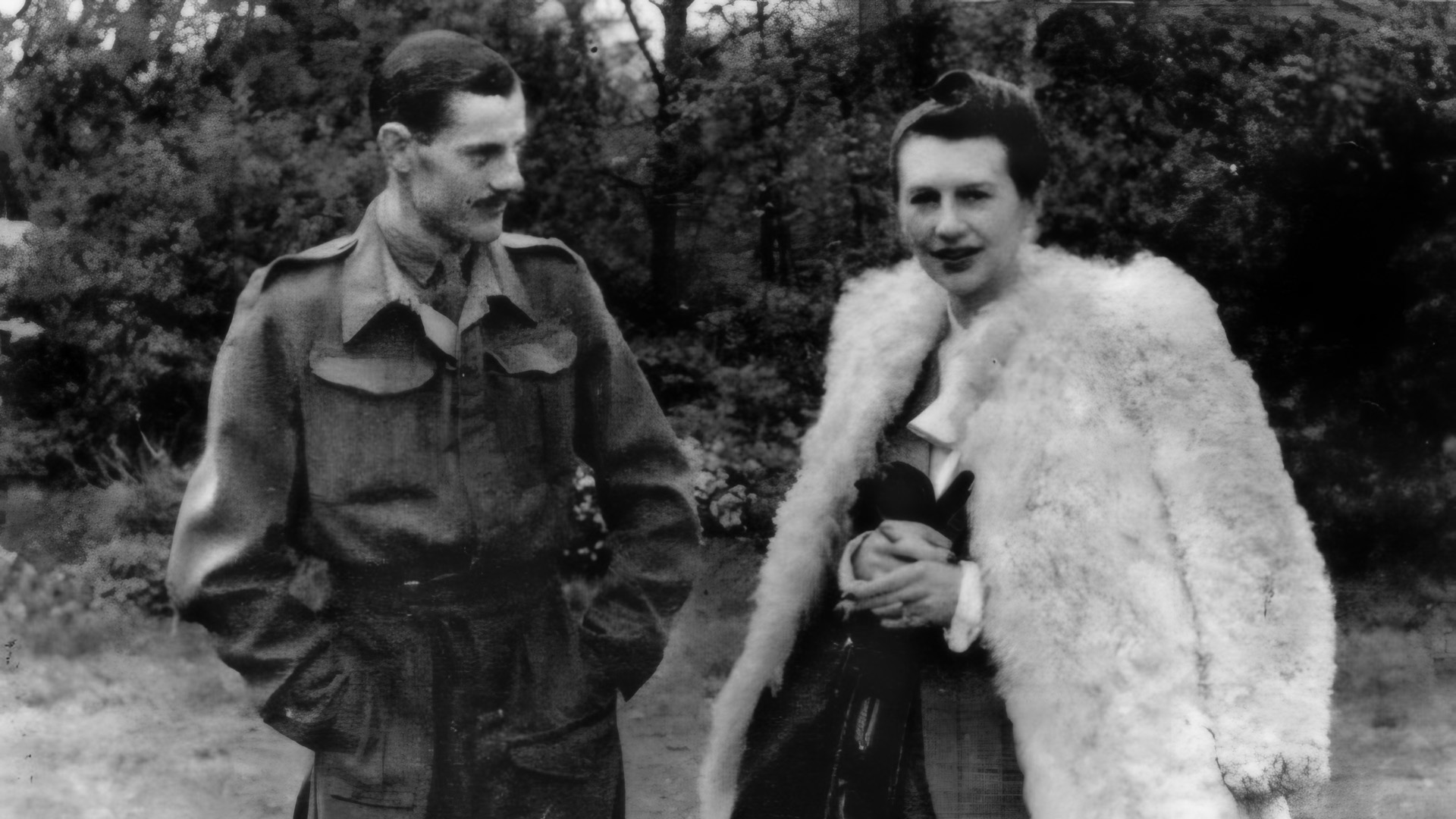
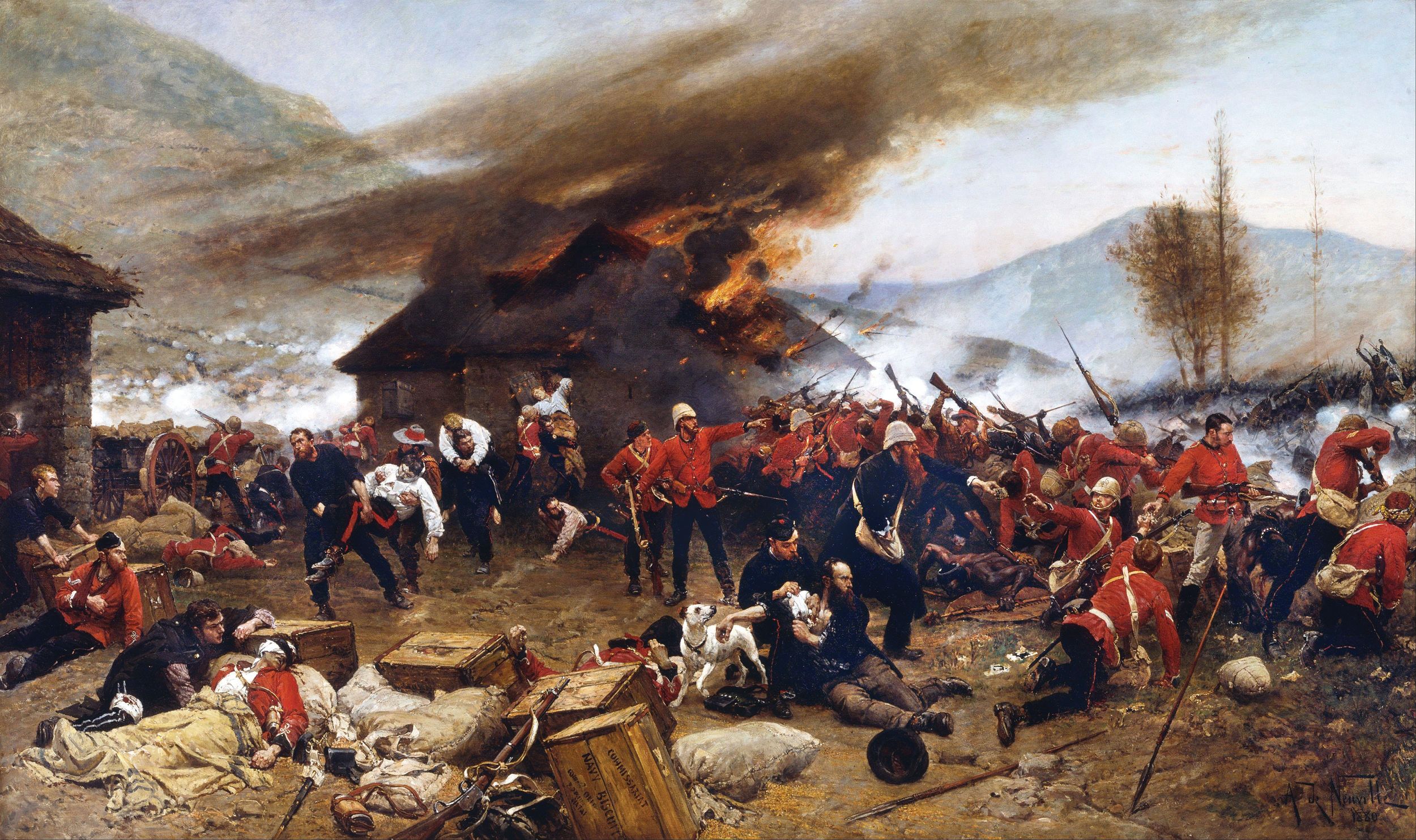
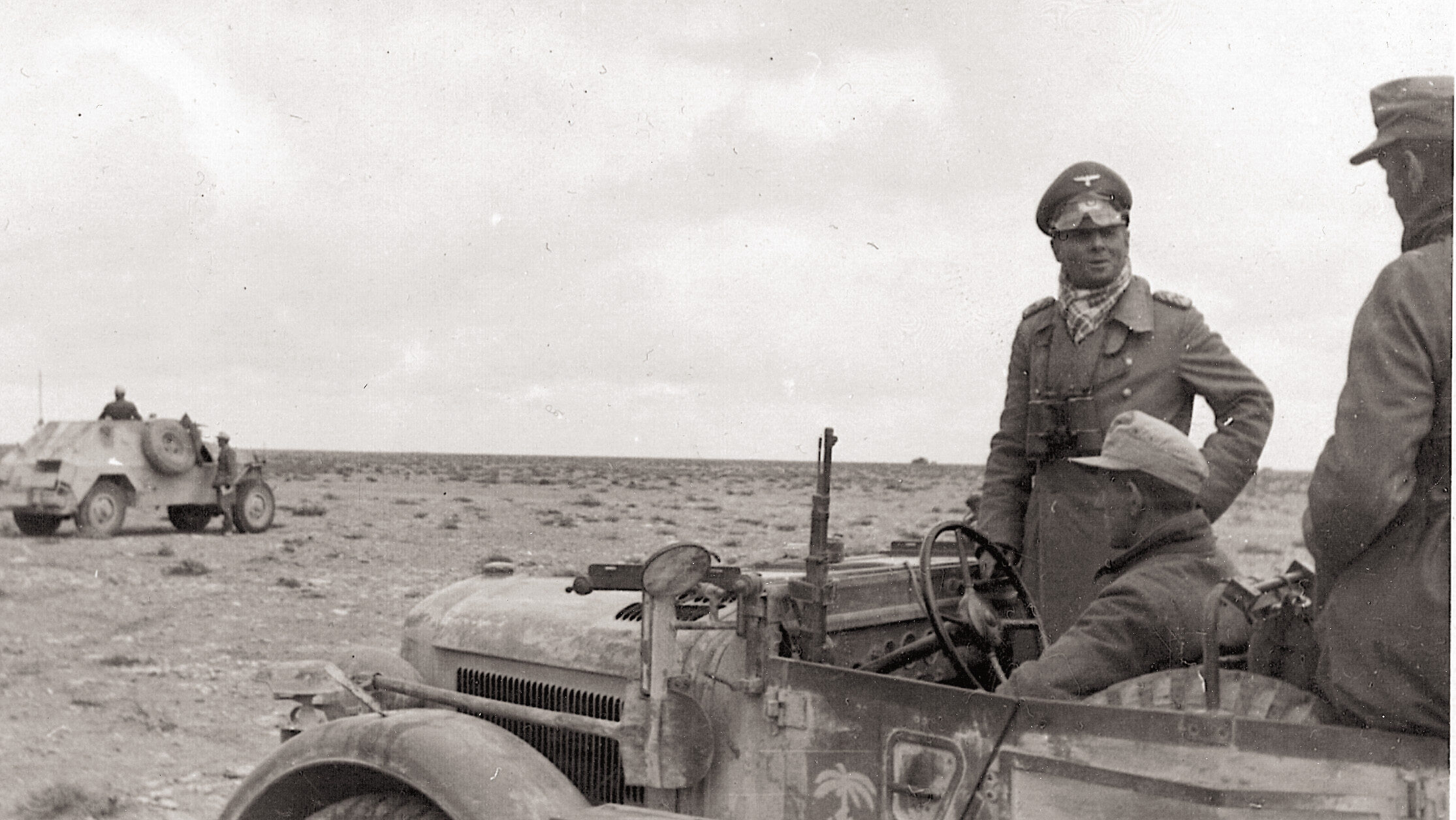
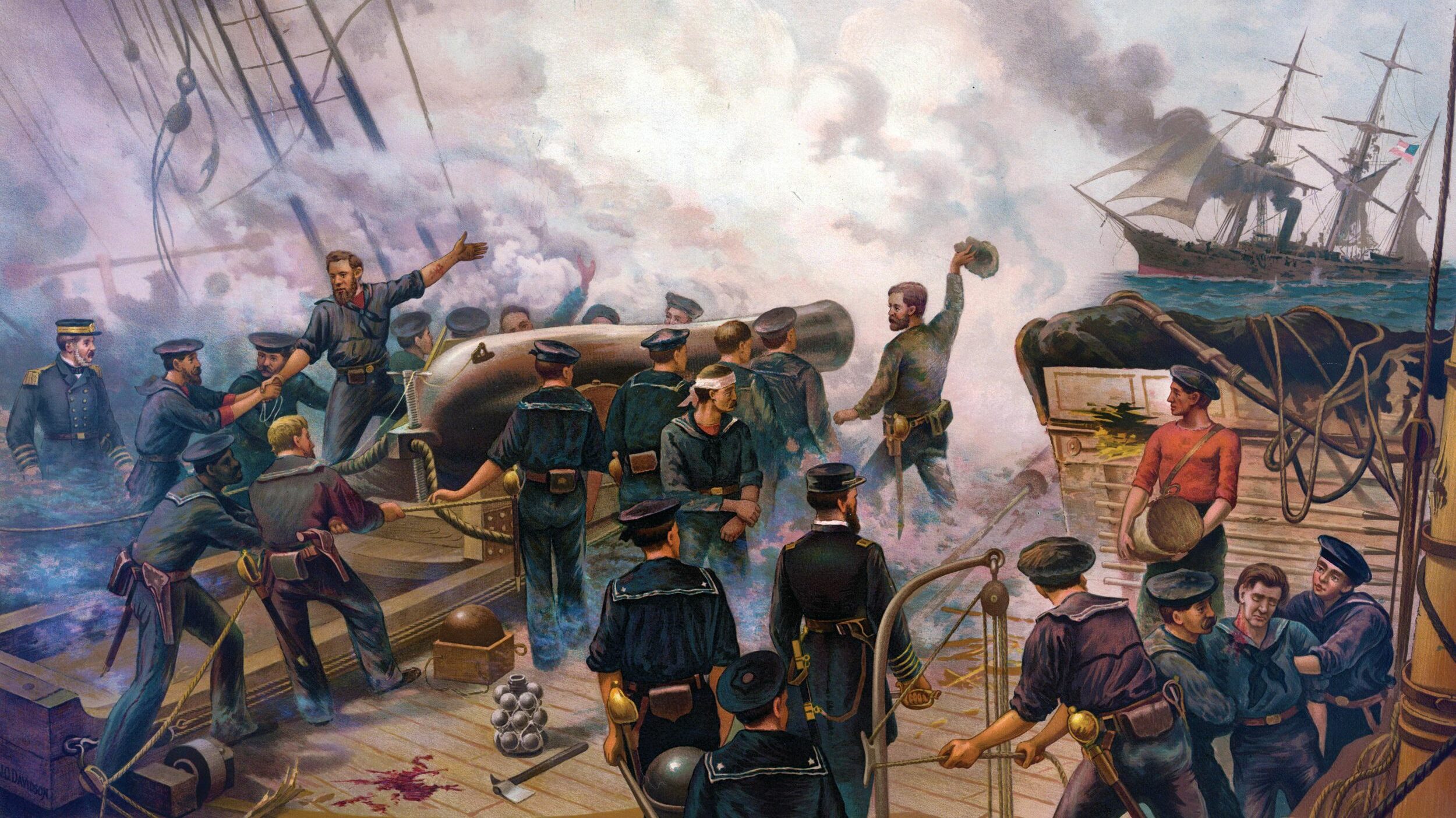
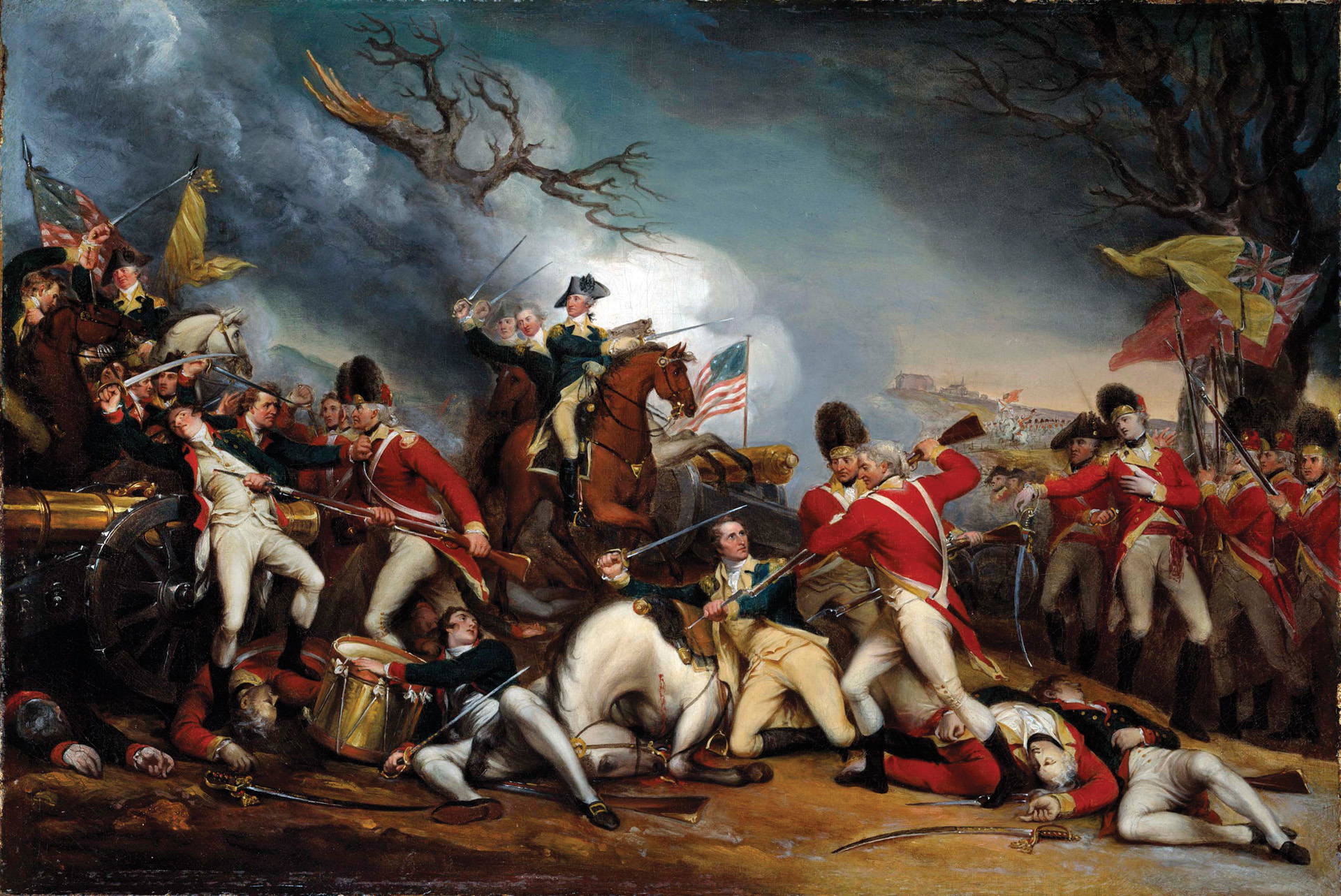
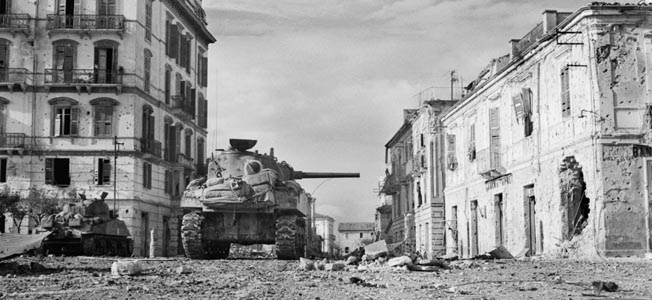
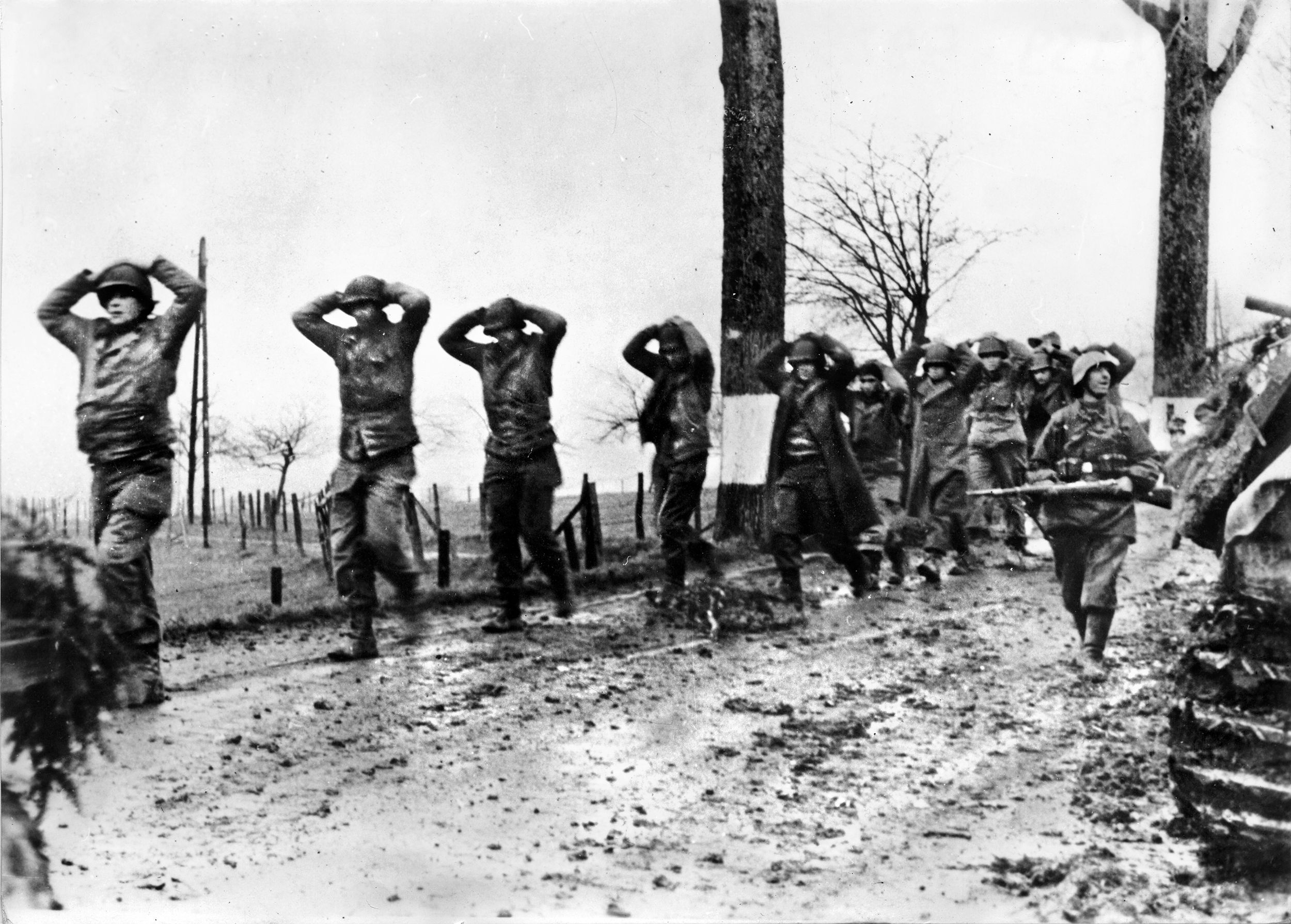
Join The Conversation
Comments
View All Comments